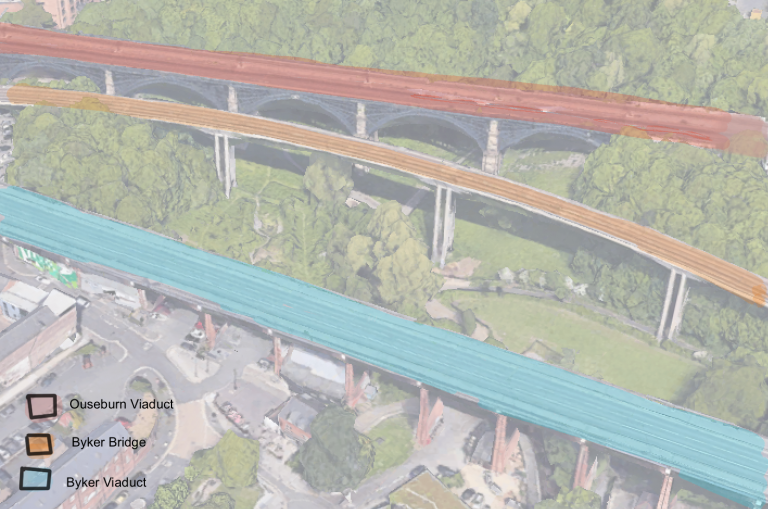Reliving the History
 © Copyright Arundhati Chitnis
© Copyright Arundhati Chitnis
The local authorities designate conservation areas. These areas include villages, towns and cities with rich historical value. The unique design of buildings, streets and spaces create an impregnable sense of place. when I visited Ouseburn valley in Newcastle upon Tyne, I could feel the culture and history that place holds. It inspired me to learn more about conservation. Likewise, if anyone wants to experience the essence of the Industrial Revolution in the UK, Ouseburn valley shows itself as an image preserved in time.

Urban design and the use of design codes – APL8014- A view of Ouseburn Viaduct (1839) taken c.1960.
Furthermore, the Lower Ouseburn Valley had fallen prey to neglect and disuse by the mid-twentieth century but with the help of independent charity and heritage enthusiasts like the Ouseburn Trust, the area is regenerated to be utilized as a creative space by various artists, musicians and performers. Hence, the area is gaining a new identity that goes hand in hand with its historical value.
Further, I would like to talk about the three main bridges of Ouseburn valley as it depicts the heritage of Ouseburn in synchronicity.

© Copyright Arundhati Chitnis
1. Ouseburn Valley
Architects John and Benjamin Green designed it for the Newcastle and North Shields Railway in late 1830s. Not to mention it was during peak of industrial revolution Also, it is now a Grade II listed building. It is an architectural marvel. It portrays the richness as well as the advancement of the area. The viaduct we see today is a rebuilt version during 1867 and 1869 using iron as the basic material.

© Copyright Oliver Dixon and licensed for reuse under this Creative Commons Licence.
2. Byker Bridge
The Byker Bridge is in use since in 1878 as a road bridge. It was built to move carriages, but it is still in use today to transport automobiles. Moreover, the 143-year-old bridge went through some additions of pre-stressed concrete beams on cantilevers for supporting footways and new crash barriers.

© Copyright Arundhati Chitnis
3. Byker Viaduct
Designed in 1979, it is the first structure in Britain that used cantilevered concrete sections with joints glued with epoxy resin. Moreover, it is a built-in ‘S’ shape and is a light railway bridge that continues to be in use till date.

© Copyright Newcastle libraries (Flickr)
These three bridges are in close proximity to each other geographically but don’t fail to impress their vastness upon us when we stand in front of them, making us relive the timeline Ouseburn valley has lived through.
References:
https://www.gracesguide.co.uk/Ouseburn_Viaduct
http://www.northumbria.info/Pages/ouseburnvia.html
https://historicbridges.org/bridges/browser/?bridgebrowser=unitedkingdom/ouseburnviaduct/
https://www.buildingconservation.com/articles/fitting-in/fitting-in.html
https://www.designingbuildings.co.uk/wiki/Strategic_urban_design_and_the_conservation_team


